Ayurveda Physician
Sascha Kriese completed a three-year course of Ayurveda studies at Thames Valley University London and learned the art of pulse reading in India from his mentor Dr. Pankaj Naram. For many years he has been running his own Ayurveda practice in Brighton. He is also Co-President of the Ayurvedic Practitioners Association (APA).
Clinically relevant basic concepts for work with animals
Sascha Kriese BA Hons (Ayu)
According to Ayurveda, the three Doshas are a dynamic expression of the five elements in all living beings. The statements of the Ayurvedic "knowledge of life" are therefore not only valid for humans, but are equally applicable to plants and animals. Although there are few references in the classical Ayurvedic texts for the therapy of flora and fauna, traditions and statements of many vaidyas clearly prove that plants and animals have always been treated and also healed on the basis of Ayurvedic principles.
Of course Ayurveda is no substitute for modern veterinary medicine, but the holistic approach of Ayurveda can make a decisive contribution to consciously increasing the health and vitality of animals as well as their harmonious relationship with humans. In practice, it has been shown that animals respond quickly and successfully to Ayurvedic therapy, and are generally very flexible and open to profound changes, healing and transformation.
"Ayurveda for children: three decisive steps on the way to healing & health"
Chikitsa (treatment) in Ayurveda is basically divided into two areas: Prevention and therapy of imbalances. The ayurvedic specialty Bala Chikitsa thus includes all preventive as well as therapeutic approaches and strategies for people in the growth or Kapha phase of life. Ideally, early and appropriate preventive measures in childhood lead to the fact that health problems later in adulthood do not occur at all or less. In this lecture we will discuss three specific preventive measures from the field of communication, which - from an Ayurvedic or holistic point of view - can have both preventive and healing effects. The main focus is on the communicative treatment of children and young people. However, these measures can just as well be related to the interaction with the childlike parts in the adult, because Bala Chikitsa also includes on a psycho-emotional level the therapeutic work with the inner child.
"The clinical view in Ayurveda: Holistic understanding beyond medical diagnosis"
Clinical terms are linguistic symbols that not only form the basis of a medical language, but as abstracting carriers of meaning they also have a decisive influence on the clinical view and the subsequent therapeutic approach. In other words: medical words and the views they are based on have a great influence on professional perception in the clinical context and consequently also on the therapeutic as well as personal interaction with patients. Referring to the symposium topic "Pariksha", this lecture is about a differentiated view of the semantic contents and conceptual basis of the terms pariksha and diagnosis in the context of a holistic approach in the clinical field. What concretely distinguishes modern diagnostics from Ayurvedic examination strategies? What effects do these different approaches have on the professional relationship with patients and the course of therapy? And what exactly are the decisive aspects that have to be considered by Ayurveda therapists and physicians in order to actually meet the high demands of a holistic clinical understanding?

Rosenberg Ayurveda and Wellness-Consulting AG
European Academy for Ayurveda Switzerland
Büelstrasse 17
CH-6052 Hergiswil NW
info@ayurveda-symposium.org
Newsletter
* I have the Privacy policy taken note of. I agree that my details and data for answering my enquiry are collected and stored electronically.

2024 © Rosenberg Ayurveda Academy gGmbH